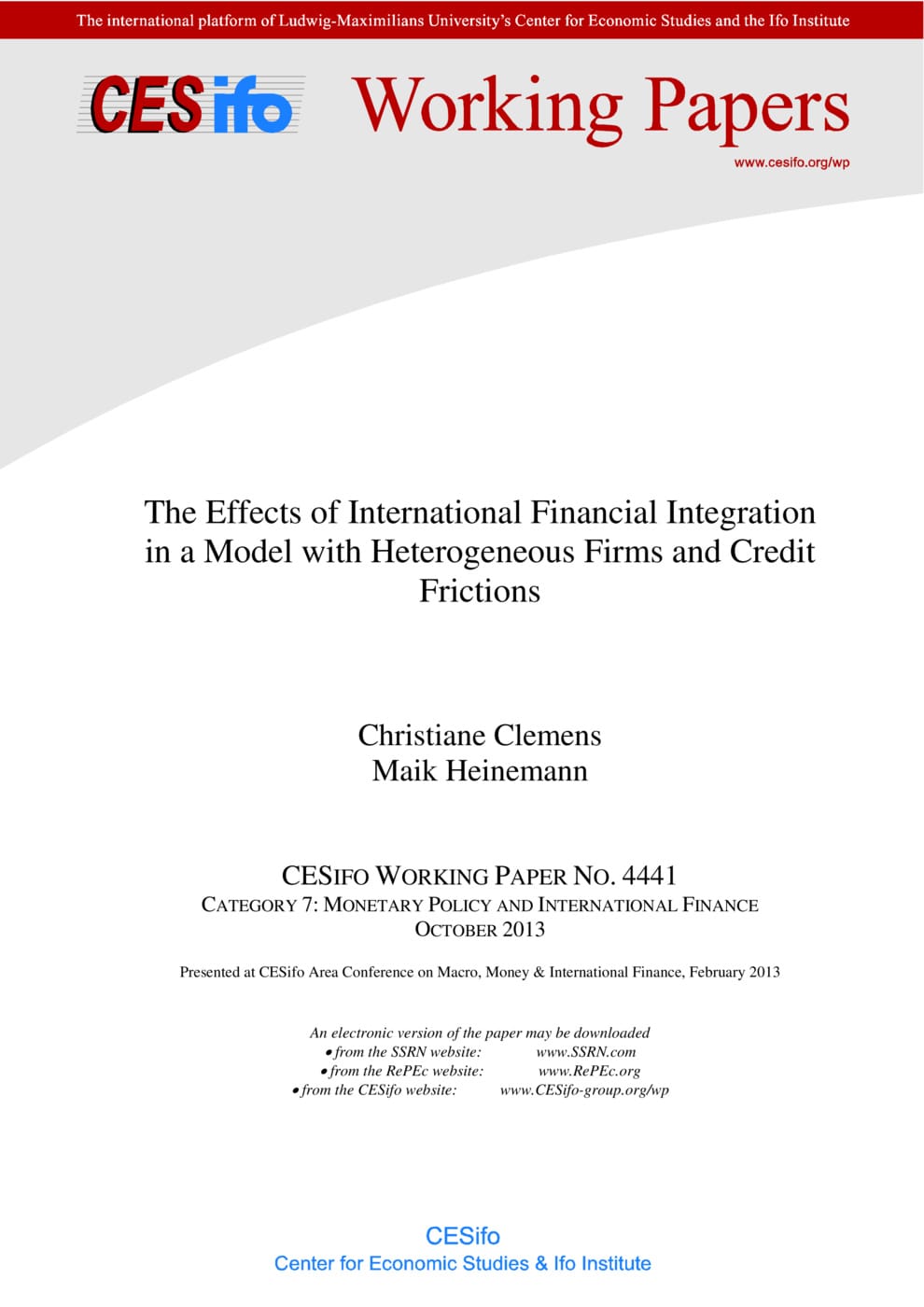The Effects of International Financial Integration in a Model with Heterogeneous Firms and Credit Frictions
CESifo, Munich, 2012
CESifo Working Paper No. 4441

This paper examines the consequences of international financial integration in a two–sector heterogeneous–agent dynamic general equilibrium model of occupational choice with financial constraints and idiosyncratic risks. We discuss the macroeconomic and distributional effects of financial market integration for small economies which differ only with respect to the tightness of constraints on the domestic credit market. The results contribute to an explanation of the ‘Lucas paradox’, i.e. the empirical observation of capital flowing from poor to rich countries, where lending countries are characterized by tighter domestic constraints and lower capital returns. Capital market liberalization goes along with adjustments towards the world return. Capital–exporting countries experience an increase in GNP, whereas the GDP effect is of ambiguous sign and driven by the tightness of the domestic credit market. Countries with less tight constraints or unlimited access to external business financing loose throughout integration due to a decline in aggregate output and a very unequal distribution of welfare gains and losses in the underlying heterogeneous–agent economy. We find that international integration is only beneficial for economies where financial constraints on entrepreneurial activity are very tight. Here, we observe an accumulation–driven rise in the entrepreneurship rate, overall positive output effects and welfare gains for all members of society.
Monetary Policy and International Finance
Fiscal Policy, Macroeconomics and Growth